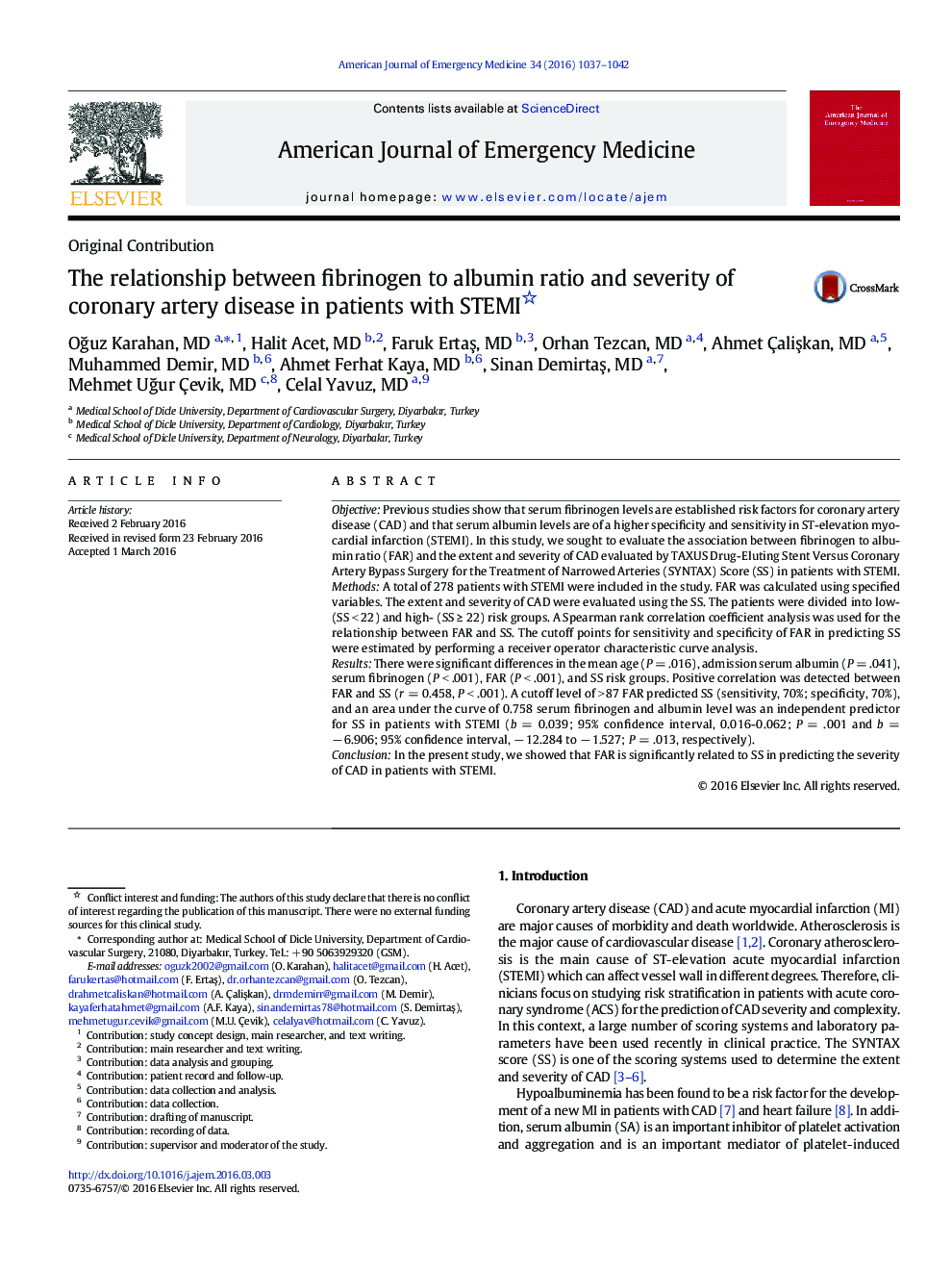| Article ID | Journal | Published Year | Pages | File Type |
|---|---|---|---|---|
| 3223120 | The American Journal of Emergency Medicine | 2016 | 6 Pages |
ObjectivePrevious studies show that serum fibrinogen levels are established risk factors for coronary artery disease (CAD) and that serum albumin levels are of a higher specificity and sensitivity in ST-elevation myocardial infarction (STEMI). In this study, we sought to evaluate the association between fibrinogen to albumin ratio (FAR) and the extent and severity of CAD evaluated by TAXUS Drug-Eluting Stent Versus Coronary Artery Bypass Surgery for the Treatment of Narrowed Arteries (SYNTAX) Score (SS) in patients with STEMI.MethodsA total of 278 patients with STEMI were included in the study. FAR was calculated using specified variables. The extent and severity of CAD were evaluated using the SS. The patients were divided into low- (SS < 22) and high- (SS ≥ 22) risk groups. A Spearman rank correlation coefficient analysis was used for the relationship between FAR and SS. The cutoff points for sensitivity and specificity of FAR in predicting SS were estimated by performing a receiver operator characteristic curve analysis.ResultsThere were significant differences in the mean age (P = .016), admission serum albumin (P = .041), serum fibrinogen (P < .001), FAR (P < .001), and SS risk groups. Positive correlation was detected between FAR and SS (r = 0.458, P < .001). A cutoff level of > 87 FAR predicted SS (sensitivity, 70%; specificity, 70%), and an area under the curve of 0.758 serum fibrinogen and albumin level was an independent predictor for SS in patients with STEMI (b = 0.039; 95% confidence interval, 0.016-0.062; P = .001 and b = − 6.906; 95% confidence interval, − 12.284 to − 1.527; P = .013, respectively).ConclusionIn the present study, we showed that FAR is significantly related to SS in predicting the severity of CAD in patients with STEMI.
